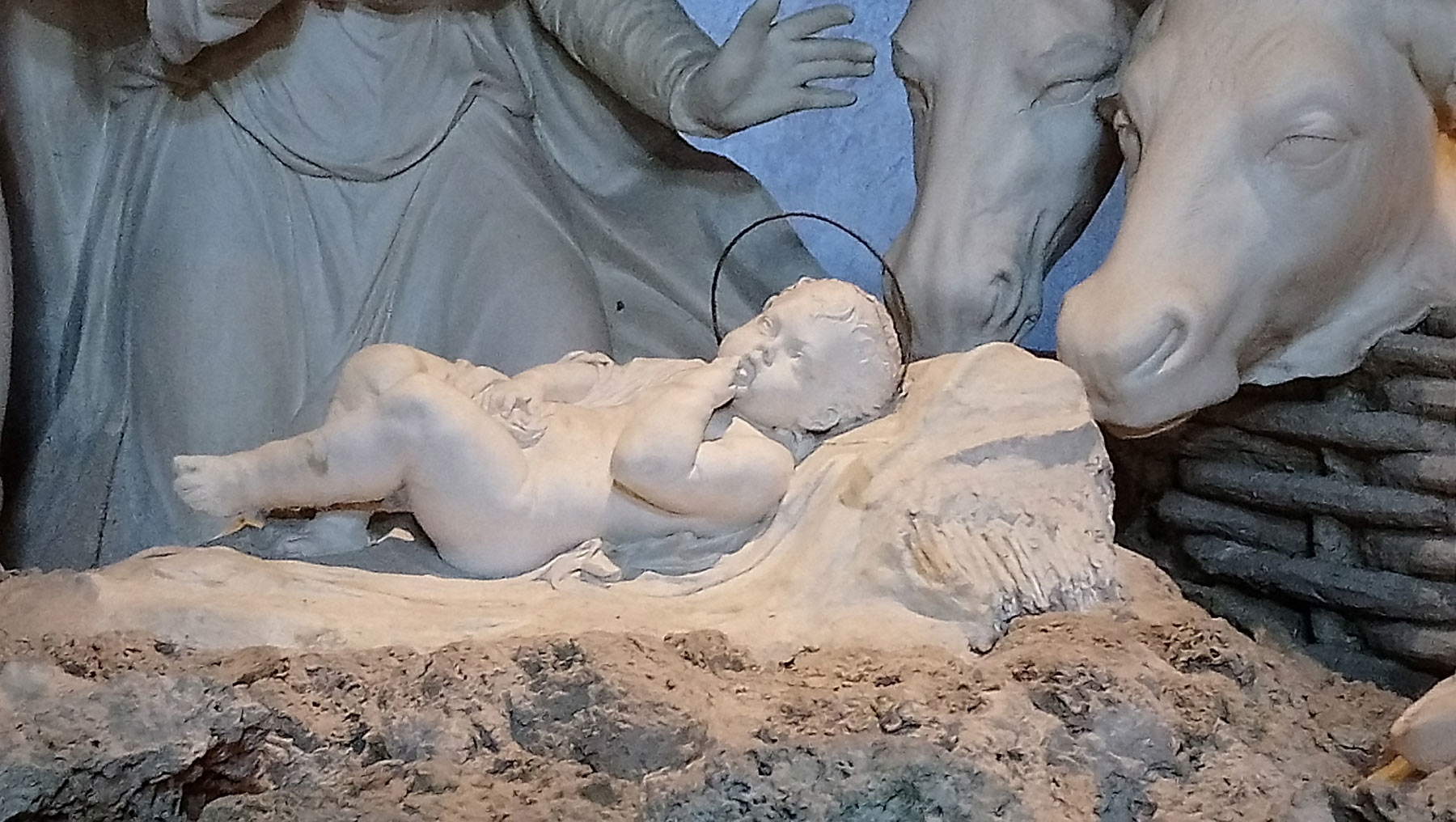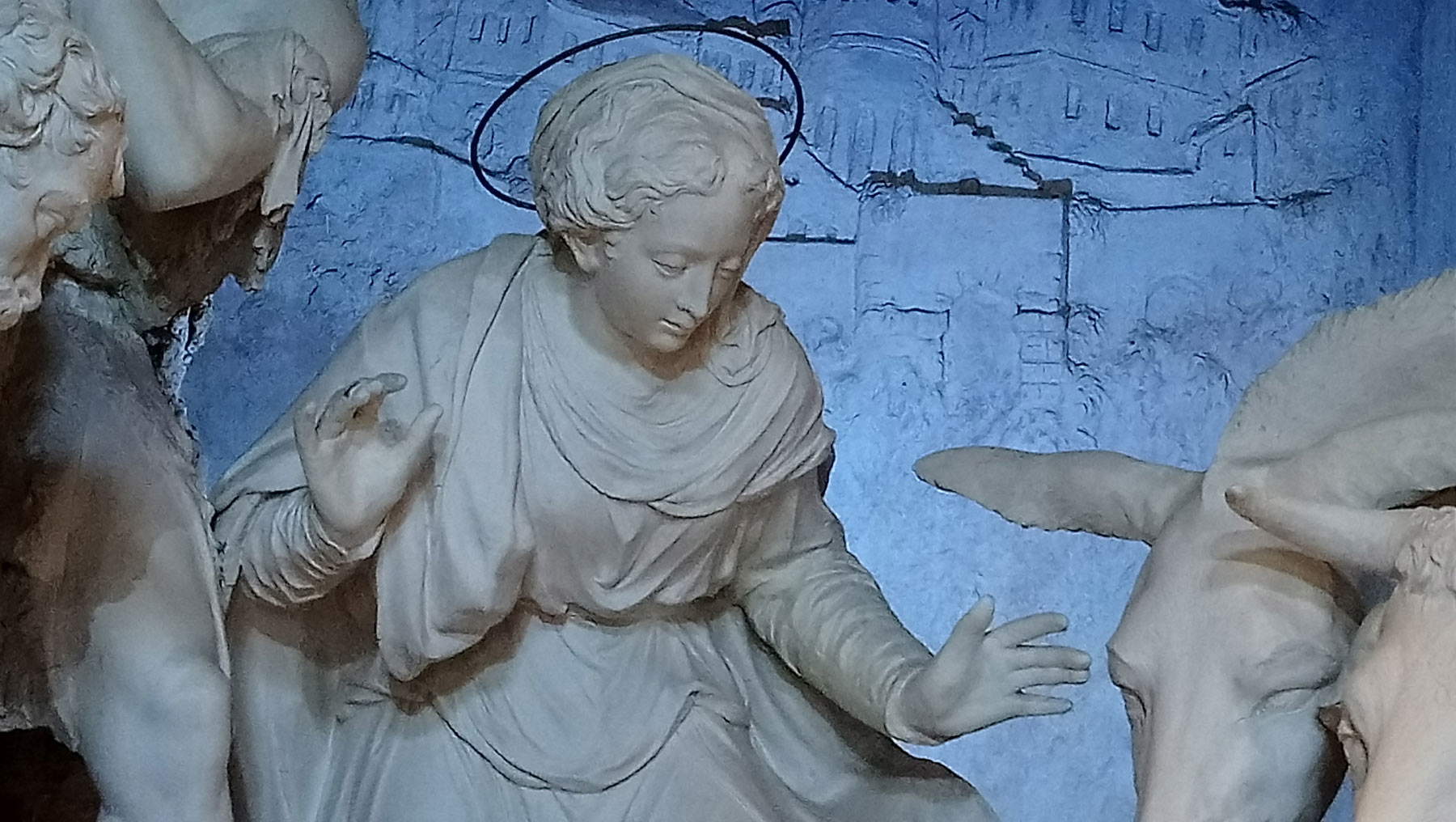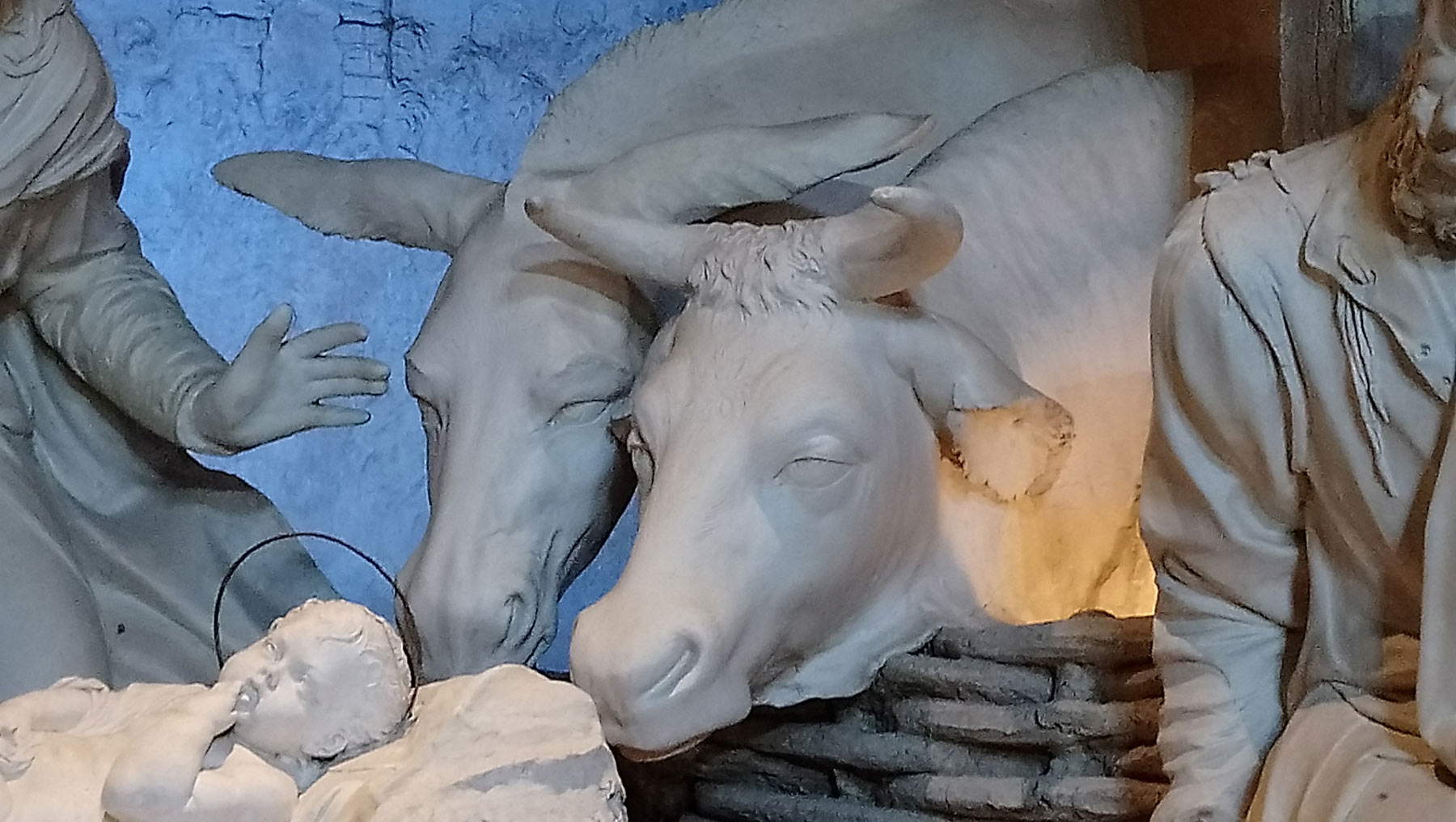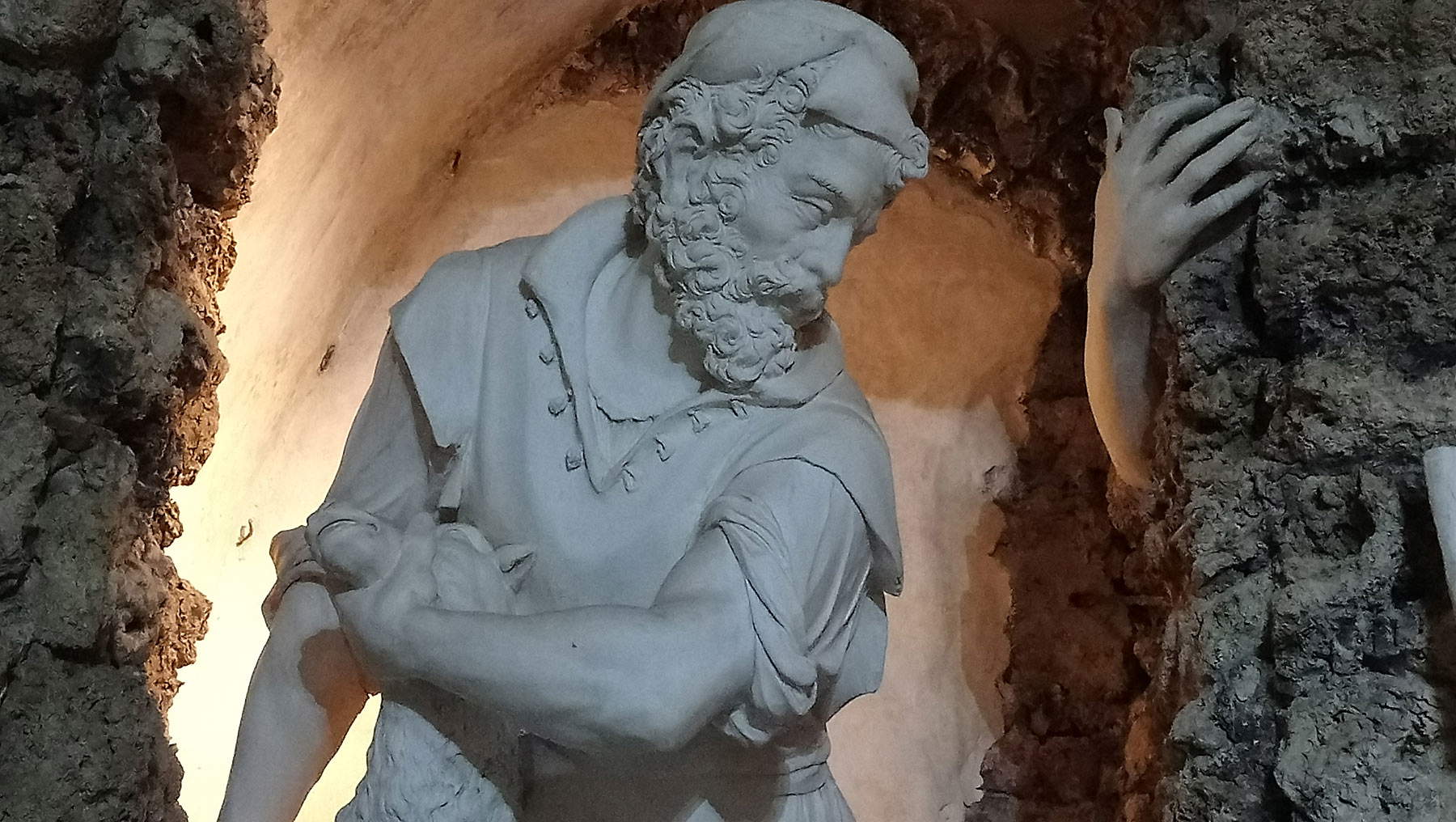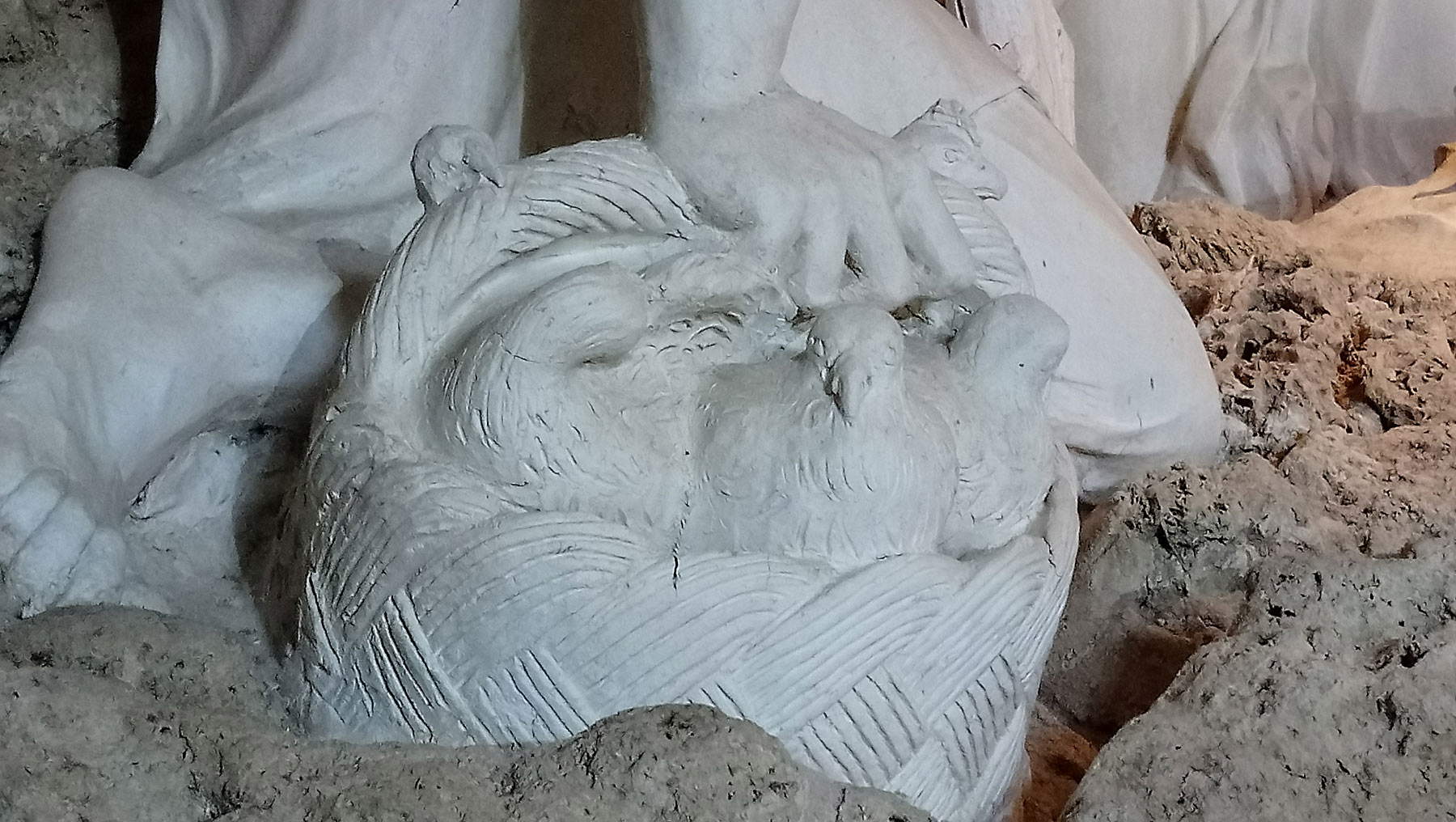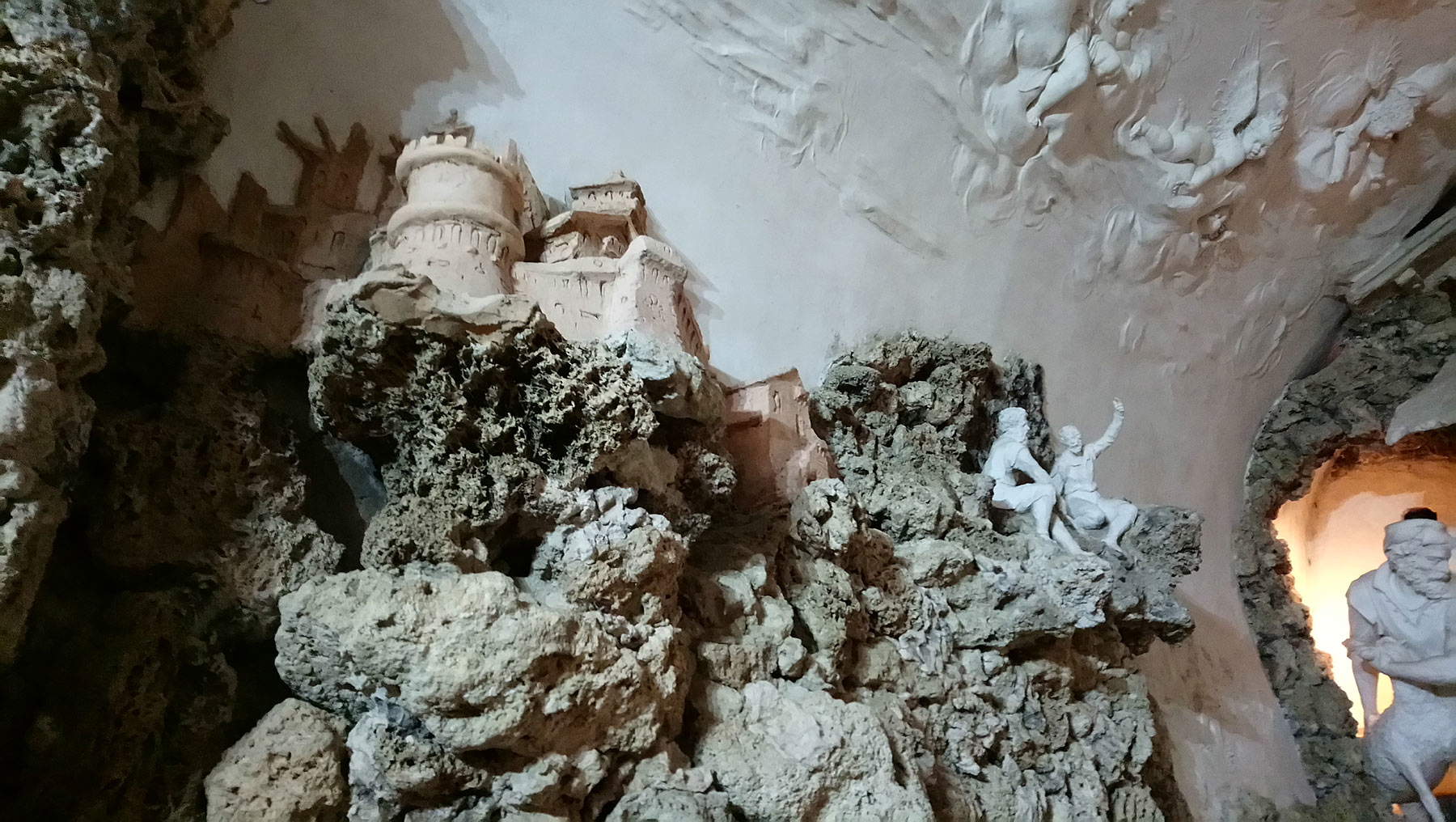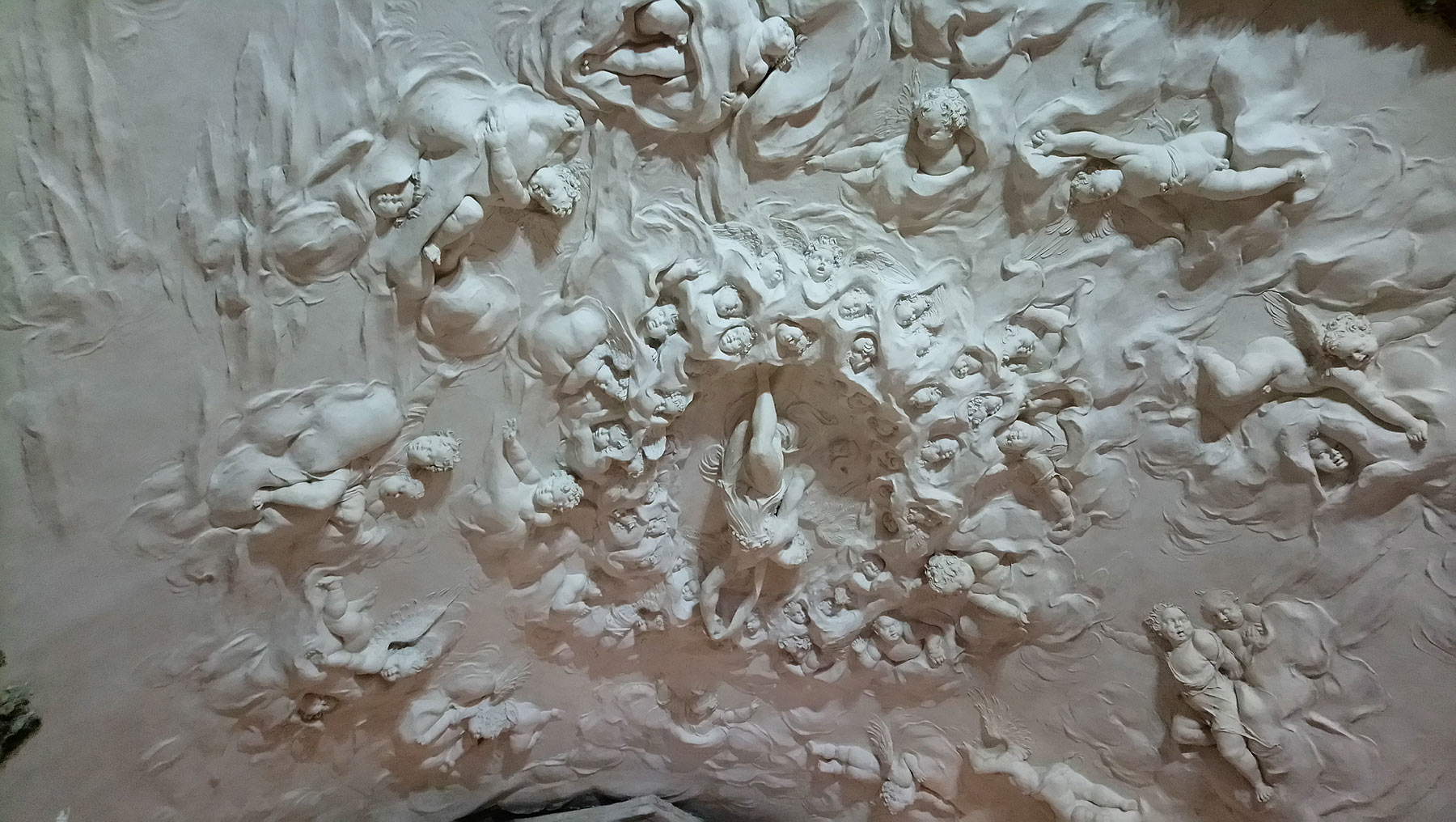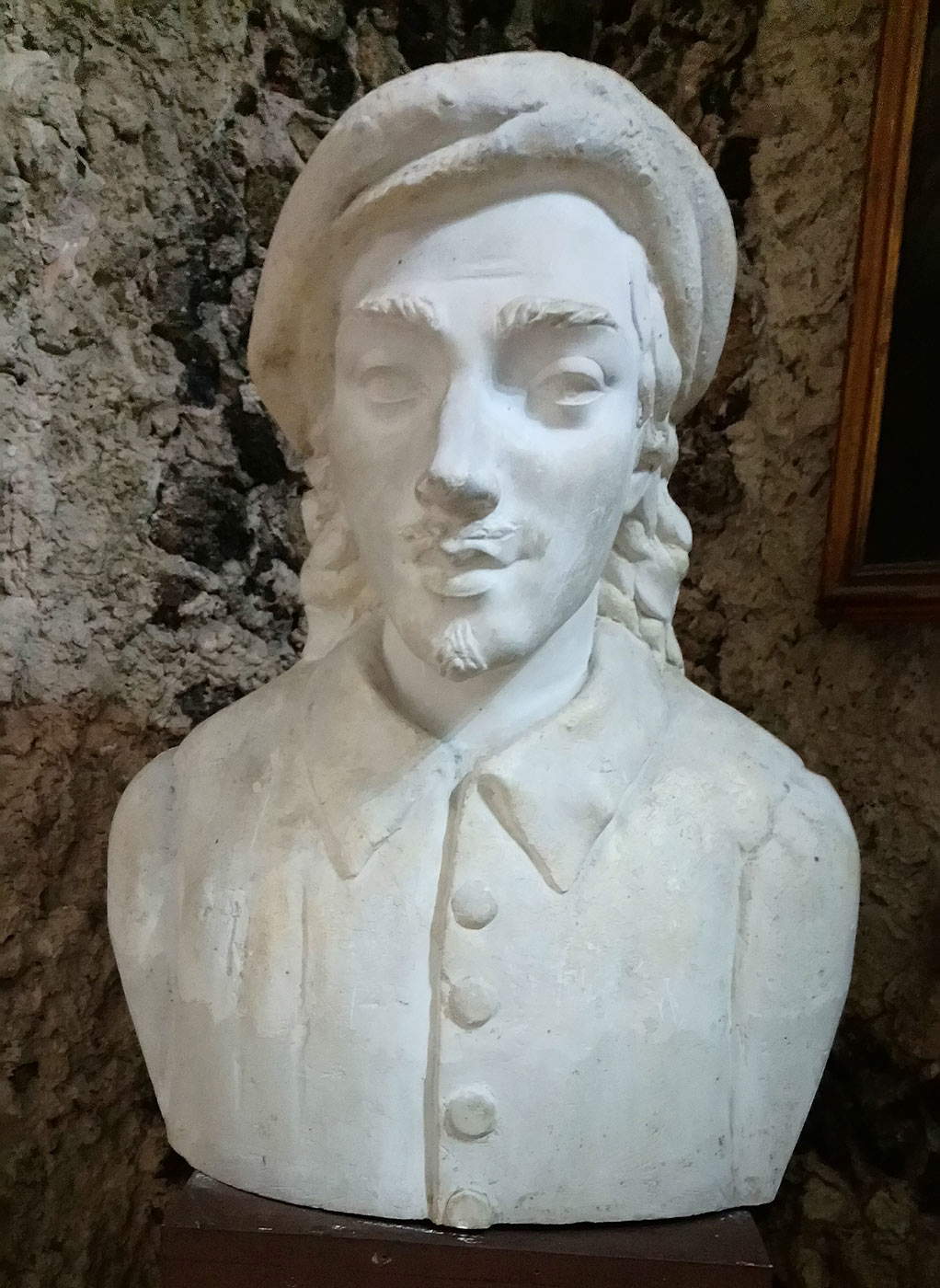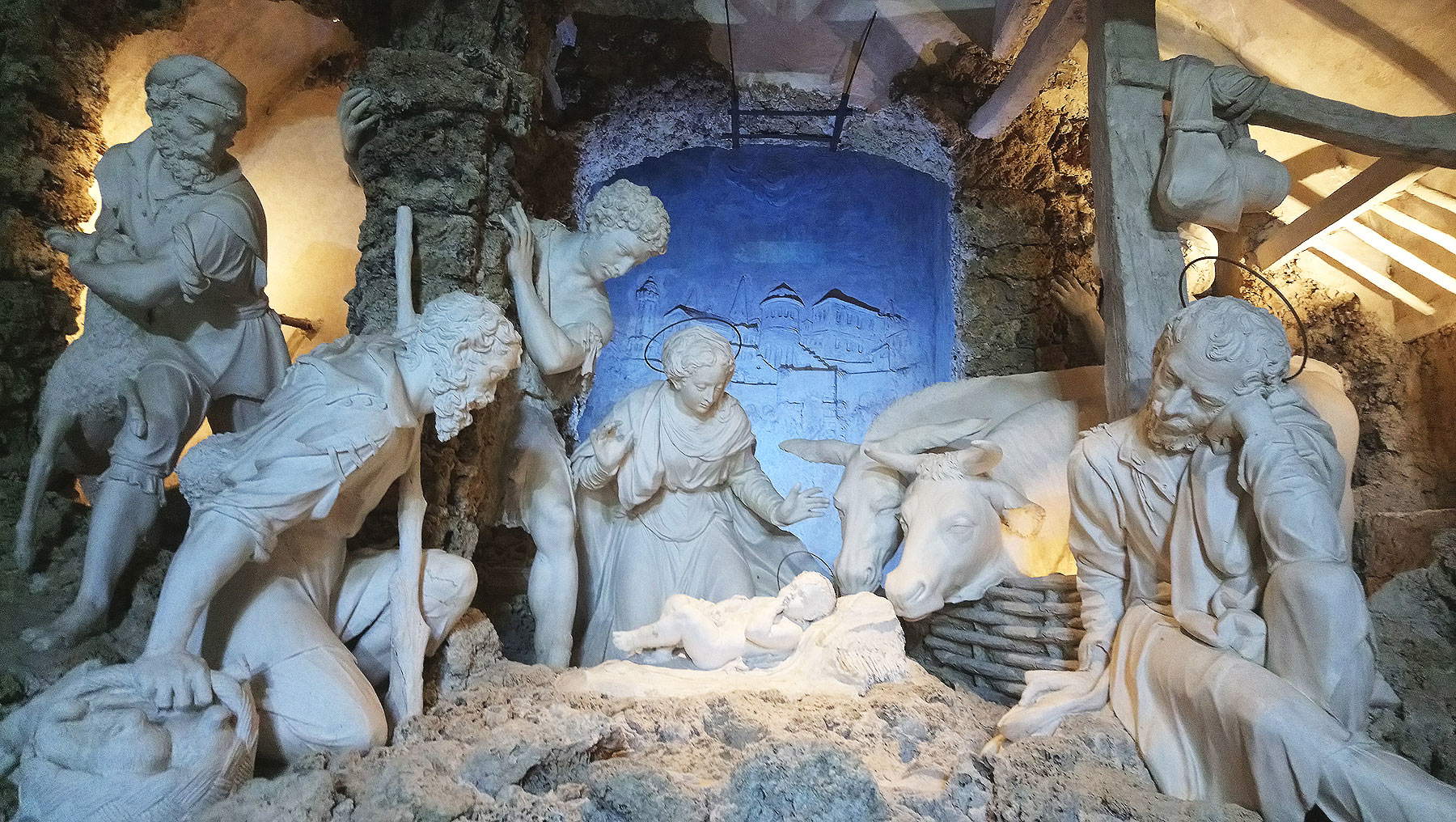by Ilaria Baratta , published on 24/12/2019
Categories: Works and artists
- Quaderni di viaggio / Disclaimer
Federico Brandani's Nativity Scene is the oldest nativity scene with life-size stucco figures: a Mannerist masterpiece, it takes visitors into the Nativity scene.
It was October when I had the opportunity to admire for the first time live, in Urbino, the nativity scene by Federico Brandani (Urbino, c. 1520 - 1575) in theOratory of San Giuseppe; the nativity scene is usually associated with the Christmas season, being one of the symbols par excellence of Christmas, but what one feels in front of this masterpiece, in an extraordinarily evocative setting, such as the place that still holds it after almost five hundred years, is certainly valid for any month of the year. In front of the Brandani Nativity scene there is an atmosphere of strong intimacy, one of the most intense in which I have immersed myself while admiring a work of art: a cozy environment, in which one literally feels enveloped by a tender light, slight but warm, that spreads from the characters on the scene. A kind of theatrical scene that the visitor silently watches or is led to comment under his breath, such is the stillness that emanates, almost for fear of interrupting that moment so extraordinary and magical. Rather than to sculpted figures, since this is a sculptural masterpiece, it seems to be before real people, who are experiencing at that precise moment the birth of a child: one perceives the amazement at this happy event, especially as far as the mother is concerned, and the adoration for the little creature that has come into the world, but at the same time also the willingness of everyone to welcome the child in absolute tranquility, to which the viewer, as already stated, is also invited.
At the center of the scene is baby Jesus surrounded by the typical characters of the nativity scene: Mary, St. Joseph, the ox and the donkey, and three shepherds who have come to adore him. Mary, unlike the others, appears visibly amazed by so much beauty and sweetness: kneeling, she observes the child, making a gesture of amazement with her arms and hands that speaks for itself; Joseph, on the other hand, is seated on the right side of the entire scene and is depicted holding his head with one hand, on his temple. The ox and the donkey, one next to the other, from an enclosure, try to warm the Baby Jesus with their breath; in the left part are three shepherds, of whom one kneeling in the foreground is holding on to a stick, another is overhead standing, and another, younger than the other two, is leaning out from a column in order to better admire the child up close.
The man of letters Carlo Grossi, in his Comentario degli Uomini illustri di Urbino (Commentary of the Illustrious Men of Urbino), described in the nineteenth century with minuteness, and even a certain poeticism, the splendor of Federico Brandani’s Nativity scene.
 |
| Federico Brandani, Nativity Scene (1545-1550; life-size stucco sculptures; Urbino, Oratory of San Giuseppe) |
 |
| Federico Brandani, Nativity Scene, detail of the Holy Family |
 |
| Federico Brandani, Nativity Scene, detail of the Child |
 |
| Federico Brandani, Nativity Scene, detail of the Virgin |
 |
| Federico Brandani, Nativity scene, detail of the ox and donkey |
 |
| Federico Brandani, Nativity scene, detail of the shepherd |
 |
| Federico Brandani, Nativity scene, detail of the basket with doves |
 |
| Federico Brandani, Nativity scene, detail of the landscape |
 |
| Federico Brandani, Nativity scene, detail of the vault |
“The group of figures that make up the so-called Nativity scene seems such a work of it that it makes one busy with alquant words to describe and illustrate it. There is the story of the great mystery expressed entirely in clay or stucco figures within a small rectangular chapel encrusted all around with pumice and tuff, as befits a grotto, carved in low relief on one side and on the other villages and peasant huts, some shepherds on the mountain pastures, and in the background behind the stable the small and adventurous city of Bethlehem. Above a floor that in width extends from one side of the chapel to the other, but in length occupies only a third of it, there is depicted a poor crib, ill-guarded by the bad weather of rain and wind, supported here by rough tufa columns, there by old wooden beams, and covered by a ruinous and falling roof with a small window above so that it might rain light.”
Grossi thus begins to render in words the suggestion of the environment in which one finds oneself. He then goes on to narrate in detail all the characters that populate the scene: “within it a mangiatoja on one side, on the ground artfully thrown a mule stick, in the air hung from the beams shepherds’ tools. In the midst you see lying on the hay the heavenly naked Child, freshly born with tender limbs huddled for the cold, and a little finger between the labruzzi in childish use. Mary, who in her youthful countenance and demure features shows her virginity, included in the high mystery is on her knees, but ecstatic and fixedly she hangs her devout gaze on the divine Son, and with her arms sweetly raised she shows that she adores Him and acknowledges Him as her Lord. From the left side toward the entrance of the stable St. Joseph cast down on the ground, making of the one hand a pillar to his face, the other resting above the ground, in his half-closed eyes and in his motionless and thoughtful countenance he gives to see that he raises within his soul the great arcane of common reparation. Meanwhile the ox and the donkey, as if concurred and moved by sovereign reason to render unusual service to their Creator lean out lowering their snouts, and warm with their breath the parched limbs, exposed to the rigor of winter. Backward an old shepherd leaning against a pillar would like as if to clear the site of those beasts to come forward and satisfy the longing, which he shows in his face and in his whole attitude, to see the prodigy that has just happened. On the left side are three shepherds of egregious work; but all three among them different in age, attitude, and expression of affections. Next to the Virgin one of youthful and lively forms tightly embraces a column and stands bowed with his face over the Child, enraptured in the beauty of his divine forms and touched at the same time by the sufferings he sees sustained by him in such poverty. Curly are the hair, the goatskin garment is artfully torn, so that the naked person appears, and the face and the whole movement of the person expresses a certain ardor of youth, whereby he approaches with more confidence than any other toward the Child and his mother. But an old man in the air of the face much of that most devout is on the act of rising from the ground, after having adored the Savior, and with his left hand leans on a gnarled staff, with his right hand clutches and forces over a basket of waders; a very beautiful movement indeed, and expressed with very natural love and grace. A third shepherd more adult than the first, of the second less old, comes forward then entering from one side of the crib and showing haste and fervent eagerness to see. But with both hands he is forced to drag forward a lamb that would like to flee backwards, with the right hand grabbing it on the rump by the fleece, with the left hand holding it in the choke, so that in that sacred horror and silence he does not hear the importunate bleating. In the meantime the lamb wriggles under the shepherd’s hands to unbind itself, and rising up rests one leg on the shepherd’s knee [...]. In the vault of the chapel, then, the artist has fashioned a most vivid glory of a great number of angels, indeed a true multitude of celestial militia, some emerging out of the clouds in one piece, others with only their faces, others naked, others covered with the lightest of garments, among whom one stands out in the middle, in stature and ornamentation greater than any other, and unfolds in the air as if written on a strip of paper, according to what it is customary, the words heralding peace to men of good will.”
This very poetic description of both the setting that houses the Crib and of the Crib itself brings out well the beauty and uniqueness of the place: a jewel of Urbino, still little known to most outside the city, unlike the famous Ducal Palace or the house of Raphael Sanzio, a certain destination for many fans of the Urbino artist.
As mentioned, the Nativity scene can be seen in theOratory of San Giuseppe: this is the seat of the confraternity of the same name established in the 16th century by the Franciscan Father Gerolamo Recalchi da Verona; the original oratory was in fact built from 1503 thanks to the first confraternity members, who first met in some spaces of the nearby Oratory of St. John the Baptist and later felt the need to have their own seat, and thanks to financial help from Duke Guidobaldo I da Montefeltro and his wife Elisabetta Gonzaga. However, the one-room church was rebuilt thanks to the Albani family between 1682 and 1689, but of the first oratory the very room characterized by its peculiar faux-cave appearance, the perfect setting to host the Brandani Crib, still remains. In fact, upon entering this small space, one immediately realizes that everything is an integral part of the Nativity itself: the chapel was completely covered with tuff to house the masterpiece that Urbino sculptor Federico Brandani created between 1545 and 1550. It is the oldest stucco nativity scene in the world to consist of life-size figures.
Its uniqueness testifies to the sculptor’s great artistic ability. Resuming the words of Carlo Grossi in his Comentario, throughout the composition and subject depicted Brandani showed “vivacity of invention and finesse of art and study of nature and truth. Great intelligence did he show in the drapery both around the figure of the Virgin and that of St. Joseph and the shepherds; moderate and gentle being the motions of the folds, not harsh, not clustered, nor fluttering or excessively folded [...]. The arrangement of the figures, though of natural form in such a narrowness of place, is so well understood and with so much elegance varied, that nothing causes you confusion or tires you [...]. In addition to this, the park number of the figures themselves, the diligence of the proportions, the naturalness and variety of the attitudes, the vivid expression of the affections make this group a vague pictorial composition [...]. But it is not to be overlooked the supreme shrewdness and industry of the artificer in the advantage that he was able to admirably portray from a single window, which from above illuminates the chapel and casts precisely all the splendor on the main figures that stand in the middle of the crib and want to be above the others illuminated, leaving the rest as in a certain darkness or to better call it reflected light that makes the story more natural and all similar to the truth.”
Of the “valiant artist” it is known that he was born in Urbino around 1520 and died here in 1575; he was a pupil of Giovanni Maria Mariani, a potter, training in the art of majolica. He also learned the art of stucco: in fact, he worked a lot of stucco in his hometown on a commission from Duke Guidobaldo II and was known and esteemed by the dukes of Savoy in Fossano and Rivoli. He also worked on rooms in the Brancaleoni Castle in Piobbico.
 |
| Federico Brandani |
 |
| Interior of the Oratory of San Giuseppe |
 |
| Interior of the Oratory of San Giuseppe |
 |
| Interior of the Oratory of San Giuseppe |
 |
| The Nativity Scene of Federico Brandani |
 |
| The Nativity Scene of Federico Brandani |
 |
| Correggio, Adoration of the Shepherds known as The Night (1522-1530; oil on panel, 256.5 x 188 cm; Dresden, Gemäldegalerie) |
Affirmed Luigi Antonio Lanzi, in his Storia pittorica della Italia dal risorgimento delle belle arti fino presso al fine del fine XVIII secolo: “Urbino also cultivated the plastic; and those, who advanced in it almost all of that age, was Federigo Brandani. Whoever thinks that I exaggerate, see the Nativity that he left at S. Giuseppe; and tell me who, outside of the Modenese Begarelli, can be compared to him for vivacity and grace of features, for variety and propriety of attitudes, for naturalness of accessories; animals that seem real; two saddlebags, and a suspended caratello, other poor implements suited to the place, all is marvel.” Brandani is likened to the celebrated sixteenth-century sculptor Antonio Begarelli (Modena, 1499 - 1565), who was capable of creating extraordinary terracotta statues (think of those executed for the Polironian complex in San Benedetto Po, near Mantua): works so accurate in detail, drapery and finish that they are comparable to marble statues.
But in the Nativity Scene of the Oratory of San Giuseppe, in addition to bringing to completion stupendous stucco sculptures, Brandani was influenced by Antonio Allegri known as Correggio (Correggio, c. 1489 - 1534), in particular by theAdoration of the Shepherds, better known as La Notte, a work of 1522-1530 preserved in the Gemäldegalerie in Dresden. Aside from the venality of its figures, Correggio’s masterpiece inspired Brandani in hisuse of light: in La Notte, light spreads throughout the painting from the little baby Jesus; a strong, almost blinding light that forces even the woman carrying a basket with ducklings to shield her eyesight with her hand and squeeze her eyes shut. Only the Madonna manages to stare fixedly at the Child without any discomfort, directly receiving the light of her son. Such an intent was achieved by the sculptor thanks to a window inside the chapel that illuminates, more faintly than in the painting, the main characters in the center of the scene, namely the Child and Mary. Moreover, if in the Nativity scene the shepherd on the far left drags forward a lamb that would like to flee back, in La Notte, on the right side of the painting, a shepherd forcefully drags a donkey toward the manger.
Thus, artists of great depth were influential in the creation of the Brandani Nativity, but the combination of great sculptural skill and the strong suggestiveness of an entire faux-cave environment made this place unique.
Warning: the translation into English of the original Italian article was created using automatic tools.
We undertake to review all articles, but we do not guarantee the total absence of inaccuracies in the translation due to the program. You can
find the original by clicking on the ITA button. If you find any mistake,please contact us.


